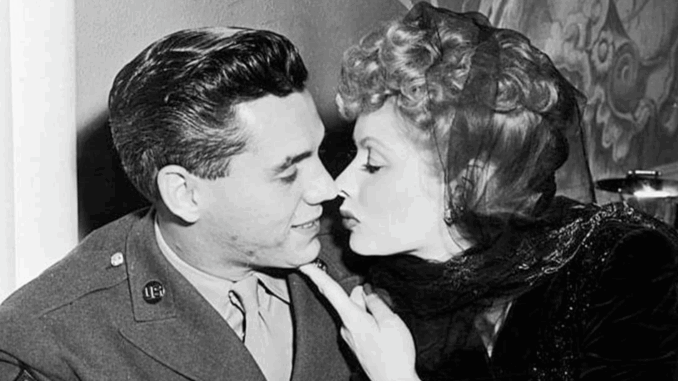
A Turning Point in TV History Was Born on Stage
Seventy-five years ago, in the summer of 1950, Lucille Ball and Desi Arnaz weren’t yet America’s most iconic TV couple. They were something far more uncertain—and perhaps even more daring: a real-life married couple determined to prove to television executives that they could be just as believable and beloved on screen as they were off.
At the time, CBS had doubts. Despite nearly a decade of marriage, the network didn’t think the American public would “buy” Lucille Ball and Desi Arnaz as a married couple on television. The skepticism wasn’t just about chemistry; it was about culture, class, and the perceived gap between a redheaded American comedienne and her Cuban bandleader husband.
So Lucy and Desi set out to prove everyone wrong the best way they knew how: on the stage.
A Vaudevillian Dream Comes to Life
Lucille Ball, long before she became the queen of sitcoms, harbored a dream of performing in vaudeville. That dream came true in spectacular fashion during the couple’s multi-city stage tour, which kicked off on June 2, 1950, at the Chicago Theatre. For Lucy, this was more than just a performance—it was a childhood ambition fully realized.
With material written by My Favorite Husband radio show writers Madelyn Pugh and Bob Carroll Jr., and comic bits contributed by clown and family friend Pepito Perez, the show blended music, comedy, and charm. Desi and his orchestra brought their signature rhythm, while Lucy interrupted the show repeatedly, determined to “get into the act.” One of the show’s musical highlights was Lucy performing “Sally Sweet” as a foil to Desi’s fiery rendition of “Cuban Pete”—a performance that brought down the house.
Together, they were magnetic. The audience didn’t just believe Lucy and Desi as a married couple. They adored them.
A Cross-Country Tour That Left Critics Cheering
Following their Chicago debut, the Arnazes took their act to Hartford, Connecticut, performing at the State Theatre—a city that already loved them thanks to a previous stage show there in 1941. Then came a prestigious two-week engagement at the Roxy Theatre in New York City, one of the most storied performance venues in America.
The Roxy wasn’t just another stop on the tour; it was sentimental territory. Desi had been performing there in 1940 when the couple eloped. Ten years later, the Roxy became a triumphant return and a full-circle moment in their personal and professional journey.
Next came Shea’s Paramount in Buffalo, and finally, the tour concluded at the Riverside Theater in Milwaukee, where they wrapped up their performances to thunderous applause.
Their stage show wasn’t just a crowd-pleaser—it was a statement. These were not two entertainers thrown together for convenience. This was a duo with undeniable chemistry, artistic synergy, and the kind of magic you can’t fake.
Desilu Is Born — And So Is a New Era

The buzz from the tour reached Hollywood fast. Columnist Radie Harris of The Hollywood Reporter captured the moment perfectly in her Broadway Ballyhoo column:
“Theirs is by far the best show of its kind I’ve ever seen… Instead of relying on just coming out in an act hastily put together, their entire spot shows thoughtful preparation and originality that adds up to entertainment plus.”
Harris praised Lucy and Desi not only as performers but as producers—smart enough to package and own their own act under the name Desilu Productions. This tour was more than entertainment; it was a prototype for what would become one of the most revolutionary production companies in television history.
The Show That Almost Didn’t Happen
It’s hard to imagine now, but I Love Lucy—one of the most influential television shows of all time—almost didn’t get made in the form we know today. Without this stage tour, CBS might never have agreed to cast Desi Arnaz opposite Lucille Ball. It was the laughter, the applause, and the undeniable spark witnessed by thousands of live audience members that finally convinced the network executives: America didn’t just believe Lucy and Desi were a couple. They loved them for it.
Legacy on the Line
Looking back 75 years later, this tour represents more than a historical footnote. It was the bridge between radio and television, between uncertainty and legacy. It was Lucille Ball and Desi Arnaz taking a chance—on themselves, on each other, and on a medium that was still finding its voice.
And that chance, taken under the lights of theaters from Chicago to Milwaukee, changed television history forever.
